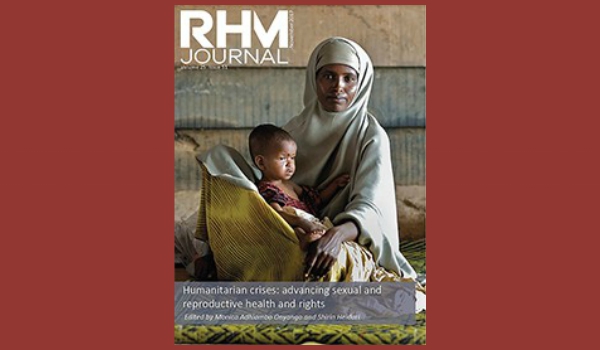
1. Protecting safe abortion in humanitarian settings: overcoming legal and policy barriers
by Akila Radhakrishnan, Elena Sarver, , Grant Shubin
Reproductive Health Matters Nov 2017;25(51):40-47 https://doi.org/10.1080/09688080.2017.1400361
Abstract
Women and girls are increasingly the direct and targeted victims of armed conflict and studies show that they are disproportionately and differentially affected. However, humanitarian laws, policies, and protocols have yet to be meaningfully interpreted and adapted to respond to their specific needs, including to sexual and reproductive health services and rights. In particular, safe abortion services are routinely omitted from sexual and reproductive health services in humanitarian settings for a variety of reasons, including improper deference to national law, the disproportionate influence of restrictive funding policies, and the failure to treat abortion as medical care. However, properly construed, abortion services fall within the purview of the universal and non-derogable protections granted under international humanitarian and human rights law. This commentary considers the protections of international humanitarian law and explains how abortion services fall within a category of protected medical care. It then outlines contemporary challenges affecting the realisation of these rights. Finally, it proposes a unification of current approaches through the use of international humanitarian law to ensure comprehensive care for those affected by armed conflict.
- The 2018 Inter-agency field manual on reproductive health in humanitarian settings: revising the global standards
by Angel M Foster, Dabney P Evans, Melissa Garcia, Sarah Knaster, Sandra Krause, Theresa McGinn
Reproductive Health Matters Nov 2017;25(51):18-24 https://doi.org/10.1080/09688080.2017.1403277
Abstract
Since the 1990s, the Inter-Agency Field Manual on Reproductive Health in Humanitarian Settings (IAFM) has provided authoritative guidance on reproductive health service provision during different phases of complex humanitarian emergencies. In 2018, the Inter-Agency Working Group on Reproductive Health in Crises will release a new edition of this global resource. In this article, we describe the collaborative and inter-sectoral revision process and highlight major changes in the 2018 IAFM. Key revisions to the manual include repositioning unintended pregnancy prevention within and explicitly incorporating safe abortion care into the Minimum Initial Service Package (MISP) chapter, which outlines a set of priority activities to be implemented at the outset of a humanitarian crisis; stronger guidance on the transition from the MISP to comprehensive sexual and reproductive health services; and the addition of a logistics chapter. In addition, the IAFM now places greater and more consistent emphasis on human rights principles and obligations, gender-based violence, and the linkages between maternal and newborn health, and incorporates a diverse range of field examples. We conclude this article with an outline of plans for releasing the 2018 IAFM and facilitating uptake by those working in refugee, crisis, conflict, and emergency settings.



